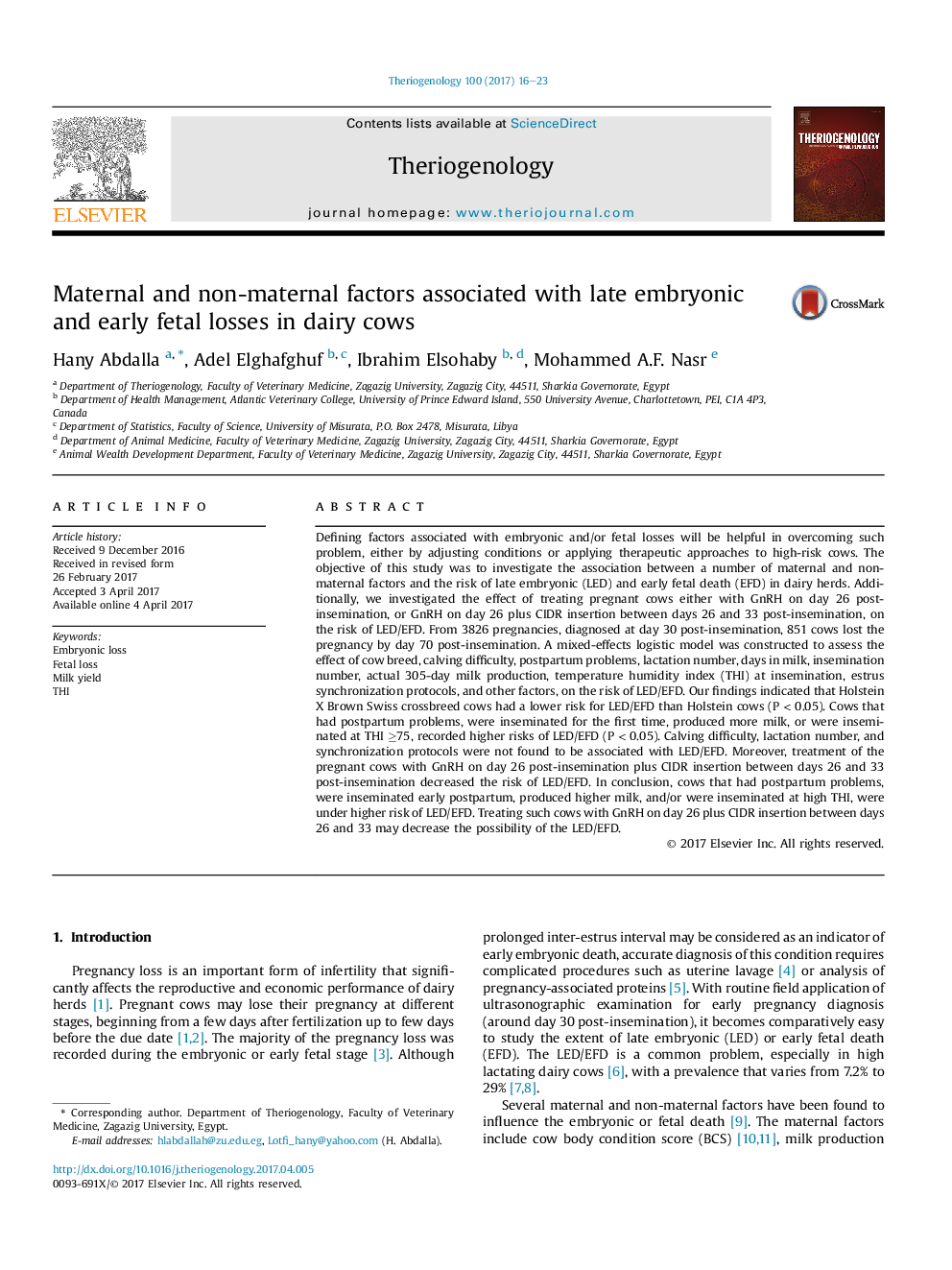| کد مقاله | کد نشریه | سال انتشار | مقاله انگلیسی | نسخه تمام متن |
|---|---|---|---|---|
| 5523088 | 1546069 | 2017 | 8 صفحه PDF | دانلود رایگان |
- Factors associated with embryonic (LED) and fetal loss (EFD) was investigated.
- Postpartum problems, high milk yield are associated with in a high risk of LED/EFD.
- Early insemination is associated with in a high risk of LED/EFD.
- Treating cows with GnRH plus CIDR on day reduce the possibility of LED/EFD.
- Crossbreed cows (Holstein X Brown Swiss) are in a low risk of LED/EFD.
Defining factors associated with embryonic and/or fetal losses will be helpful in overcoming such problem, either by adjusting conditions or applying therapeutic approaches to high-risk cows. The objective of this study was to investigate the association between a number of maternal and non-maternal factors and the risk of late embryonic (LED) and early fetal death (EFD) in dairy herds. Additionally, we investigated the effect of treating pregnant cows either with GnRH on day 26 post-insemination, or GnRH on day 26 plus CIDR insertion between days 26 and 33 post-insemination, on the risk of LED/EFD. From 3826 pregnancies, diagnosed at day 30 post-insemination, 851 cows lost the pregnancy by day 70 post-insemination. A mixed-effects logistic model was constructed to assess the effect of cow breed, calving difficulty, postpartum problems, lactation number, days in milk, insemination number, actual 305-day milk production, temperature humidity index (THI) at insemination, estrus synchronization protocols, and other factors, on the risk of LED/EFD. Our findings indicated that Holstein X Brown Swiss crossbreed cows had a lower risk for LED/EFD than Holstein cows (P < 0.05). Cows that had postpartum problems, were inseminated for the first time, produced more milk, or were inseminated at THI â¥75, recorded higher risks of LED/EFD (P < 0.05). Calving difficulty, lactation number, and synchronization protocols were not found to be associated with LED/EFD. Moreover, treatment of the pregnant cows with GnRH on day 26 post-insemination plus CIDR insertion between days 26 and 33 post-insemination decreased the risk of LED/EFD. In conclusion, cows that had postpartum problems, were inseminated early postpartum, produced higher milk, and/or were inseminated at high THI, were under higher risk of LED/EFD. Treating such cows with GnRH on day 26 plus CIDR insertion between days 26 and 33 may decrease the possibility of the LED/EFD.
Journal: Theriogenology - Volume 100, 15 September 2017, Pages 16-23
